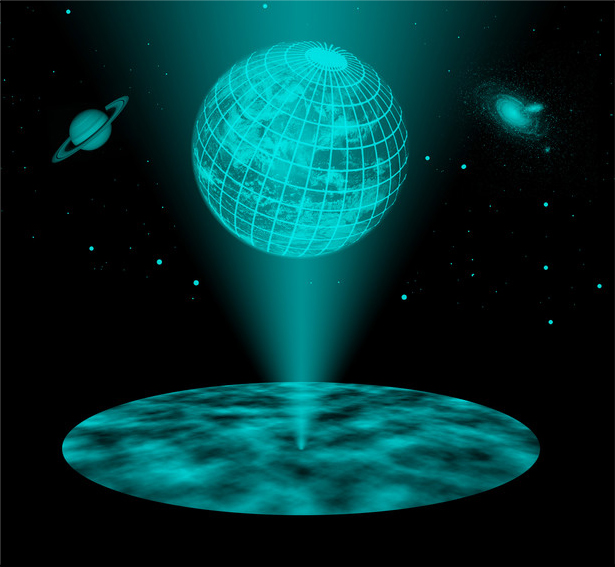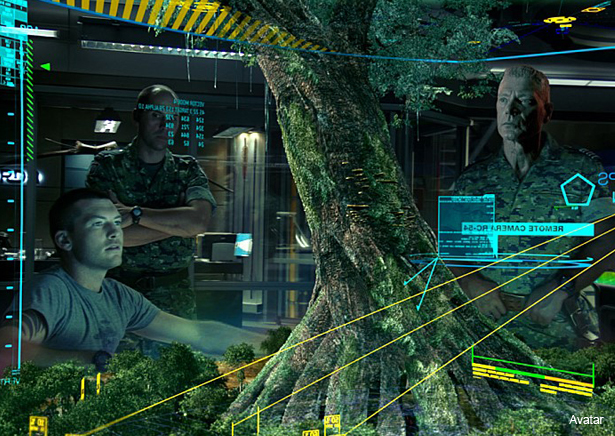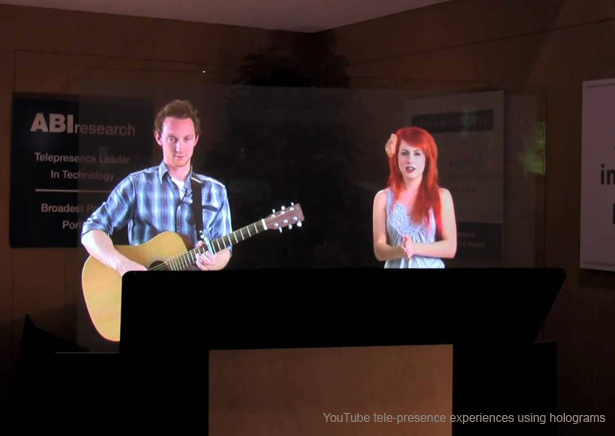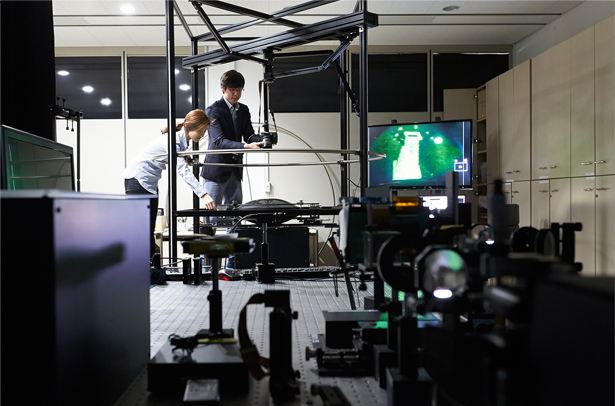
Ultimate 3D Imaging Realized by Holography
Holography, the core technology for 3D imaging
From a photograph, we only see one side of a memory we remember. What if we could realize that scene in our memory not only to a two-dimensional side, but a three-dimensional space? Hologram technology may create a 3D space as remembered into a new 3D shape in another time and space.
By its nature, light belongs to electromagnetic waves characterizing strength (brightness), frequency (color), phase, direction and so on. Whereas photographs only record light’s brightness and color, a hologram includes all three factors as a 3D image. By recording and reconstructing the light’s direction (directional variation), a hologram provides different aspects of an image for different directions, offering an experience of watching a real object. Holography implies the technology to acquire, record, and reconstruct a hologram based on the interference and diffraction of light.
Although a hologram presents the ultimate technology to acquire and reconstruct 3D images, analogue-based holograms are dependent on films and therefore require process of photographing and developing. In addition, acquisition of a hologram requires a process of shooting an object with a laser in a vibration-free darkroom,. For ultimate use of holograms, it is necessary to develo an digital-based technology for shooting moving holograms by using a camera and for transmitting the data remotely to regenerate the scene in real time. In this context, digital holography technology means that hologram data are acquired, processed, transferred, and regenerated in a digital manner.

Limits and potential of digital holography technology
Nevertheless, the concept of digital holography technology has already become popular. For instance, in the film Star Wars, people enjoy video calls through holograms with others in remote locations and watch a spacecraft in a hologram image. In Avatar, the image of planets is seen upon a hologram table. The website YouTube also features imaginative renderings of various tele-presence experiences using holograms.



ETRI, realize 360 degrees 3D hologram image
The digital holography technology currently developed by ETRI provides a holography display that can be viewed by a number of people from 360 degree directions at the same time. To overcome the limits of diffraction of spatial light modulators, a high-speed spatial light modulator at was used to create a point of view corresponding to 360-degree space at 22,000Hz speed. It is possible to create about three inches sized hologram image by using about one-inch sized spatial light modulator -and a 4-f optical system. RGB color can also be supported through a very precisely aligned color optical system.
When the performance of spatial light modulators reaches a sufficient level for hologram representation, it will be possible to make the smaller displays with the higher image quality. Also, once a camera for hologram is developed, an era of hologram-delivered conference calls and broadcasting will arrive in the future.